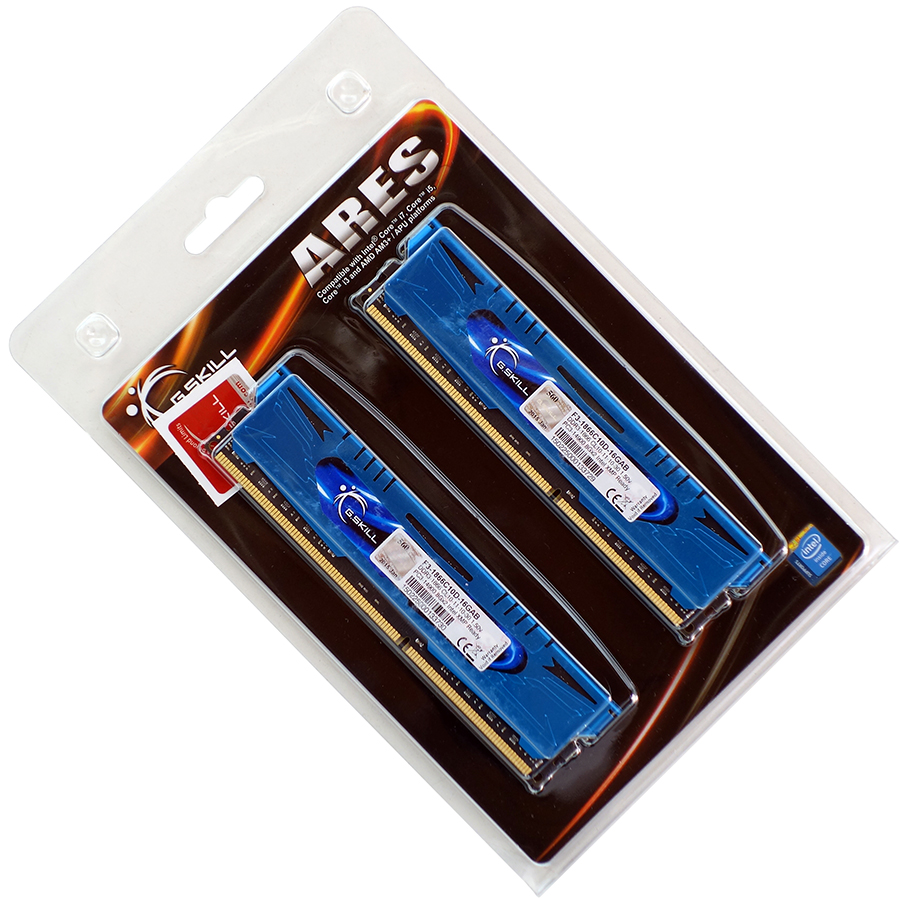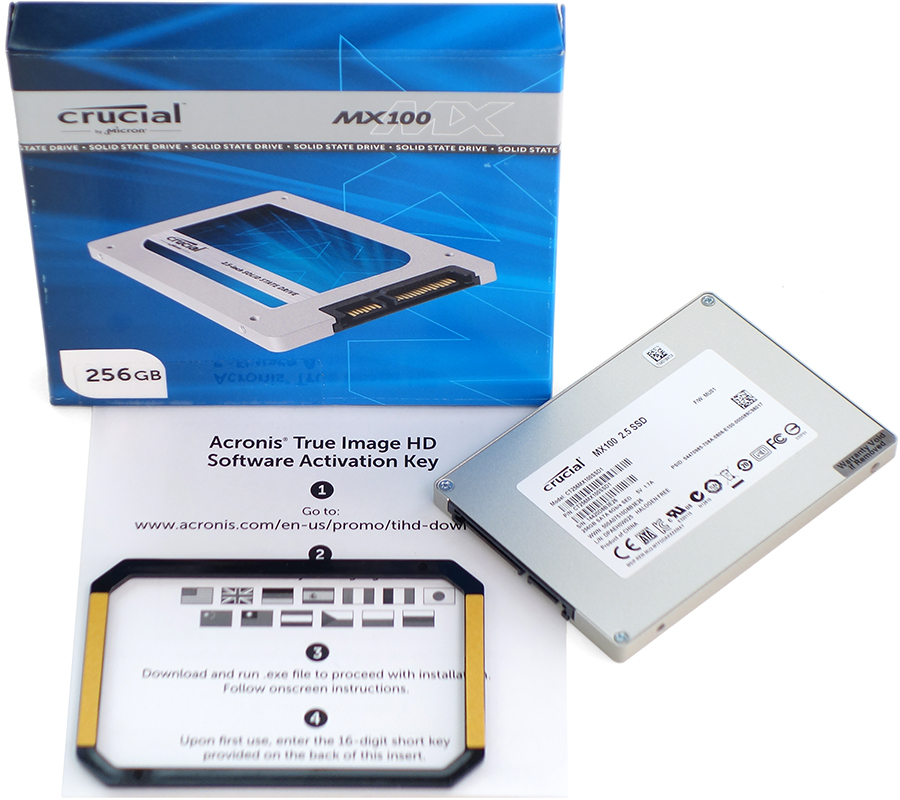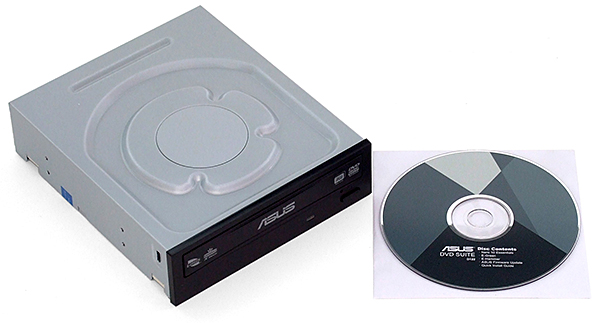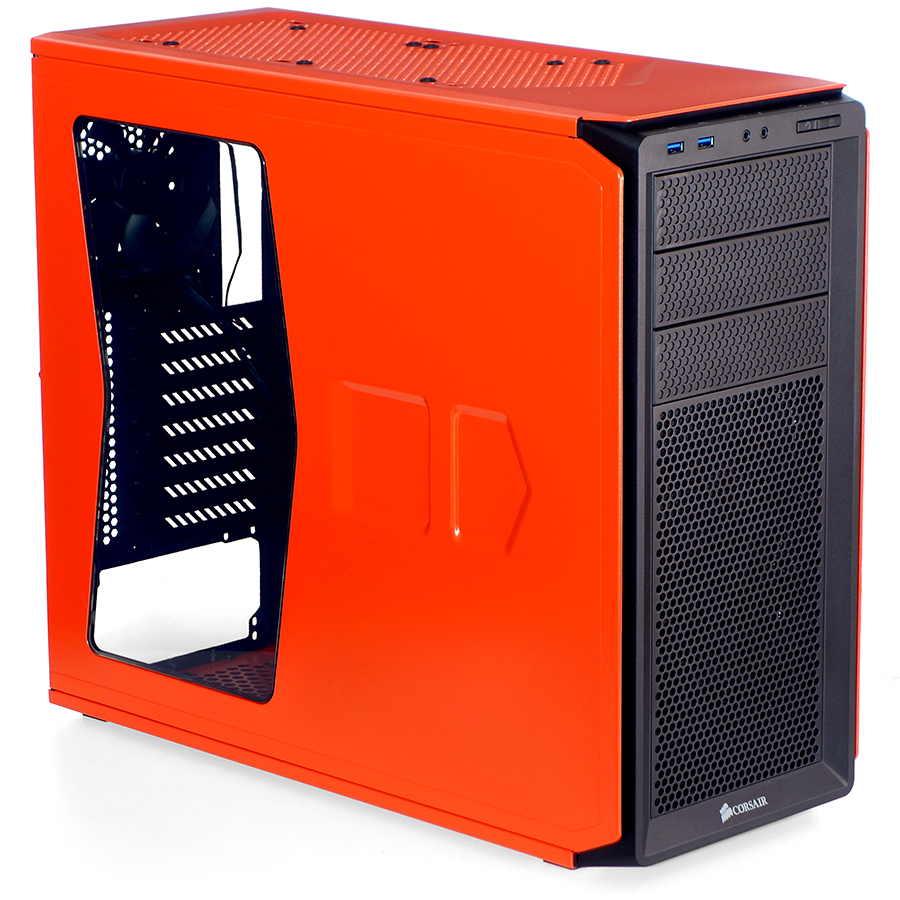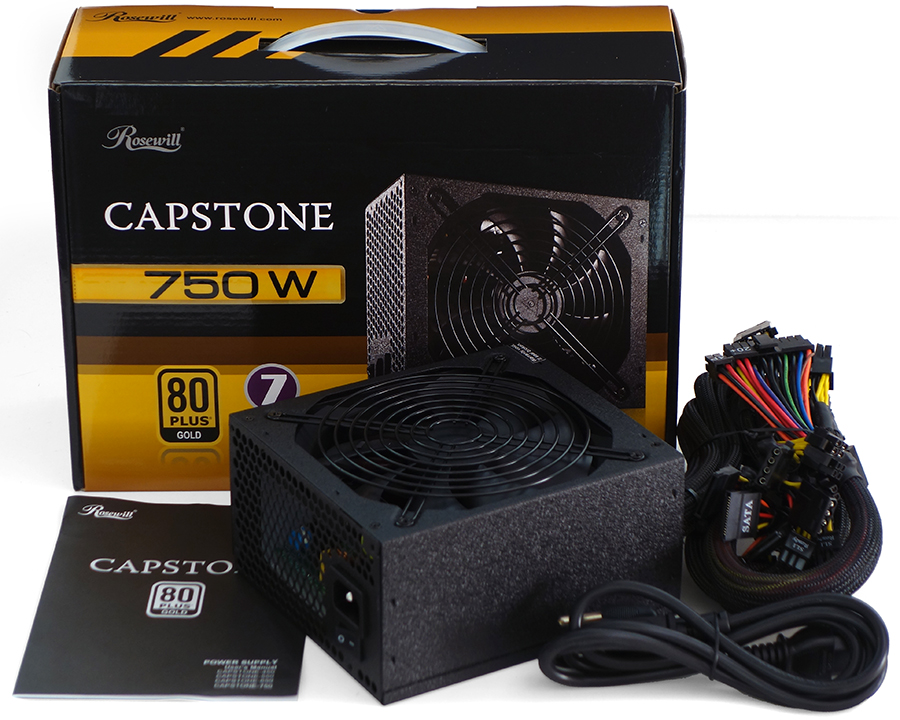System Builder Marathon Q1 2015: $1750 Performance PC
Memory, Drives, Case And Power
While graphics was the biggest suggested upgrade last quarter, one of that build's most criticized features was its 8GB DRAM capacity. Readers noted that 16GB is the starting point for high-end builds, though pricing would make this the stopping point for today’s build.
System RAM: G.Skill Ares DDR3-1866 CAS 10 (16GB)
I often talk about how G.Skill has one module that it programs several different ways to produce a plethora of high-end models, such as DDR3-1600 CAS 8, DDR3-1866 CAS 9 and DDR3-2133 CAS 10. But its F3-1866C10D-16GAB isn’t that stuff. Rated at DDR3-1866 CAS 10-11-10-28, these are the bottom parts of G.Skill’s 8GB-per-DIMM product line.
Read Customer Reviews of G.Skill's Ares DDR3-1866 16GB Kit
That doesn’t sound like it’s going to leave much room for overclocking, yet these were only a few dollars more than the Team memory that I knew would top out at this memory’s rated settings. So, for a few dollars, I took a chance that these might at least have a little extra performance left in reserve.
System Drive: Crucial MX100 256GB SSD
Critics of my previous build also recommended I save $11 on the SSD by using Crucial’s MX100 rather than the previous build’s Plextor M6S. That recommendation looks even better now, as the price difference has spread to $24.
Read Customer Reviews of Crucial MX100 256GB SSD
Other than noticing that it did well in a few benchmarks and received a recommendation in our Best SSD’s For The Money, I really can’t say much about the MX100 256GB. That’s because the sample that has appeared in so many of our charts appears to be the best-value drive we’ve never reviewed. I could have pieced together information about its Marvell 88SS9189 controller and Micron 16nm MLC flash by sorting through the reviews of other products, but instead chose to accept the recommendation of trusted colleagues and focus on my own areas of expertise.
Get Tom's Hardware's best news and in-depth reviews, straight to your inbox.
Optical Drive: Asus DRW-24B1ST DVD Burner
Read Customer Reviews of Asus' DRW-24B1ST DVD Burner
Experience tells us that Asus’ 24x DVD burner is cheap, reliable and includes the company's DVD suite. We only add this drive to facilitate Windows installation by DVD. But the eventual winner of this machine will also find that it enables the installation of store-bought games.
Case: Corsair Graphite 230T
Cases are one of my areas of expertise, and I’m certain that a large number of readers who think that they’re case experts will question my choice of Corsair’s Graphite 230T. What I know (and my critics won’t admit) is that case size has little effect on cooling, so long as it doesn’t inhibit airflow. Even though I’d never tested the Graphite 230T, I could see that it was designed for good airflow. And as a true desktop user, I like short cases.
Read Customer Reviews of Corsair's Graphite 230T
I initially found the gray model of Corsair’s Graphite 230T for a fist full of dollars, and then saw that I could get a windowed version for a few dollars more. The good includes extra length for high-end graphics cards and dual intake fans with one completely unblocked. The bad is that it has only has an inch of clearance above the motherboard, though fan mounts are offset slightly. The ugly is that I might need to offset the radiator father to the left than allowed by the case’s original mounting holes, even though I’m using standard-profile memory. Yes, I do feel lucky.
Power Supply: Rosewill Capstone 750
What happened to the “M”? Keen-eyed readers will notice that last quarter’s build included a modular version of Rosewill’s Capstone 750, while today’s build is completely non-modular. And that both versions carried the same $80 price on their respective purchasing dates.
Read Customer Reviews of Rosewill's Capstone 750
Unfortunately, that’s the way Newegg’s discounts work. The seller often ends one discount before starting another, and some discounts are larger than others. A normal person might even think that I’d at least have been able to save a little money by buying a lower-output unit, since I said last quarter’s build had wasted capacity. But that wasn’t the situation either. I knew I’d need at least 600W of top-quality power, but even those models were selling for $80 on the day I placed my order.
I might not have gotten the lower cost or modular cabling I sought, but at least the Capstone 750 is validated by independent reviewers that I trust. It’s also certified compliant within the 80 PLUS Gold standard.
Current page: Memory, Drives, Case And Power
Prev Page Graphics, Motherboard, CPU And Cooler Next Page Component Installation And Overclocking-
dish_moose GTX 970 SLI - I cannot see how this would be a proper config given that the 970 VRAM is gimped over 3.5G. That being said with potentially that much gpu power, you would think this would make a great system - I've seen too many threads where hitting the 3.5G limit cause very bad stuttering.Reply
-Bruce -
Crashman Reply
Too many of which configurations? At this point I'd rather be running 5760x1080 than 4k, if that's where you're going.15379466 said:GTX 970 SLI - I cannot see how this would be a proper config given that the 970 VRAM is gimped over 3.5G. That being said with potentially that much gpu power, you would think this would make a great system - I've seen too many threads where hitting the 3.5G limit cause very bad stuttering.
-Bruce
This happens when I build based on reader feedback. Guess what? I ordered the day 5 bonus build in anticipation of these responses, even though the 3.5GB barrier wasn't known until after I placed my orders. Enjoy!
-
jezus53 I love that color scheme of the case. Reminds me of me my 73' Nova with the 350 small block painted black and Chevy orange. Makes me want to paint my case with the same theme...CURSE YOU TOM'S HARDWARE!!!!! I though I was done with my pc...Reply -
Onus My eyes!!!Reply
Actually, other than the case being an eyesore (IMHO, the high-end build should be at-home in a high-level corporate or engineering office), I might only grumble about the non-modular PSU. On a build like this, a larger data drive is a nit; such a machine could be intended for a networked environment and won't need it anyway.
This brings back a point I've brought up before. For this machine in particular, I think it is important to identify the user, and design a build that meets that person's needs, whether or not it necessarily wins benchmarks.
-
redgarl Multi-GPU without 4k benches is ridiculous. People are more likely to run at 4k than with three 1080p monitors.Reply
Also, 4k is a game by itself. AMD and Nvidia cards act really differently at UHD. -
Crashman Reply
Is that an offer? I'd LOVE to have a 4k display. I'm sure my colleagues would as well. PM me for the shipping addresses :)15379845 said:Multi-GPU without 4k benches is ridiculous. People are more likely to run at 4k than with three 1080p monitors.
Also, 4k is a game by itself. AMD and Nvidia cards act really differently at UHD.
-
Grognak Your own benchmarks showed that the 8GB versions of the R9 290X performed better than the 970 at higher resolutions, I know DX12 is coming with stacked memory and all but that's still the logical choice until Nvidia releases an 8GB 970.Reply -
Crashman Reply
Wait...you're blaming me for picking the cards? Did you even read the article? Your colleagues picked the cards in the previous SBM response thread :)15380062 said:Your own benchmarks showed that the 8GB versions of the R9 290X performed better than the 970 at higher resolutions, I know DX12 is coming with stacked memory and all but that's still the logical choice until Nvidia releases an 8GB 970.
Not sure about the higher resolutions situation though, since I only have a single 2560x1600 and a bunch of 1920x1080 displays. Given that 5760x1080 had already been determined as the limit, I think other readers chose fairly well!
-
cknobman So personally if I am building a high end machine like this it is going to be for 4k gaming.Reply
With that said I would have:
Ditched the k processor for a regular and used the box cooler.
Take the extra money and buy a storage HDD and faster RAM.
Also it would be really nice if on the high end builds we could get just a few 4k gaming benchmarks.

